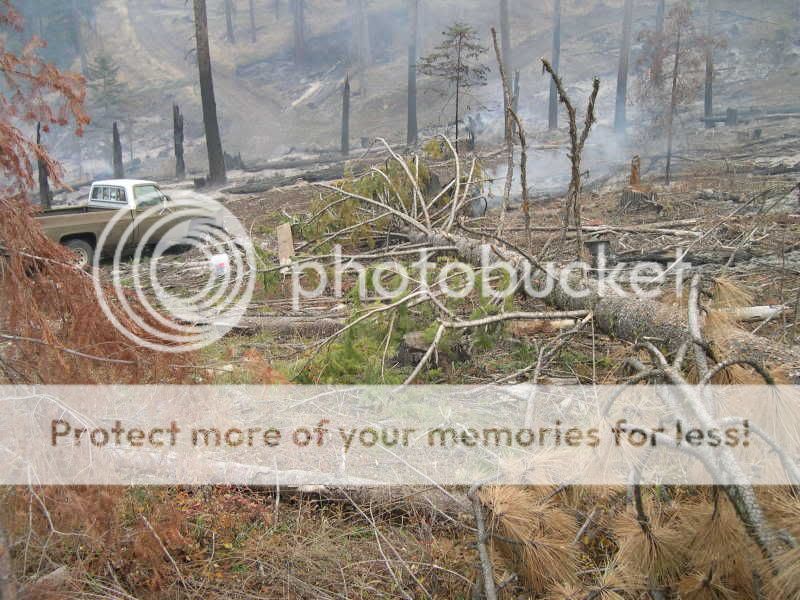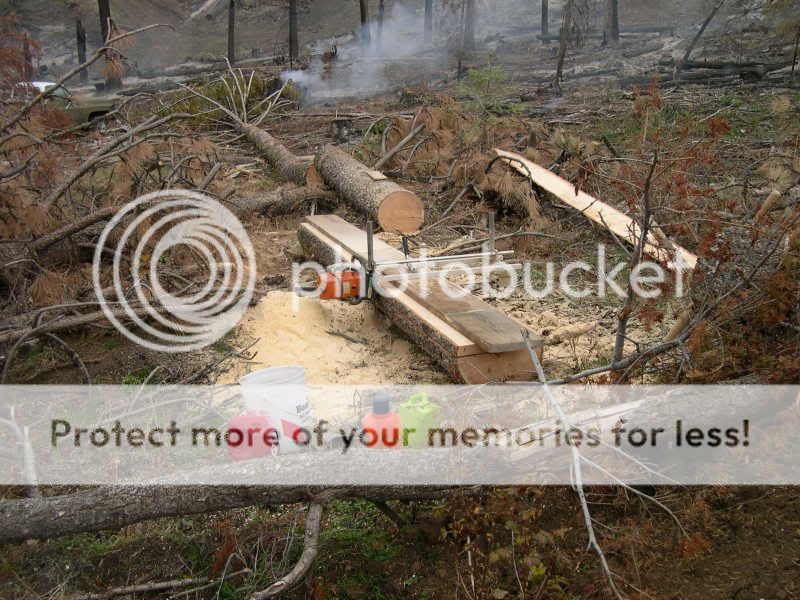mtngun
Addicted to ArboristSite
I posted pics of this area a couple of months ago. It was clearcut last year, then the slash fire got out of control and damaged many surrounding trees, which blew over during the winter. I assumed there would be a salvage operation on the blowdowns, so I've been trying to get as much wood out while the getting is good.
But instead of salvaging the blowdowns. the area was burned instead. I understand it has to be cleaned up to reduce the fire hazard and the bug hazard, but geez, there was enough lumber there to build several houses. What a waste!!!! It was only 10 - 20 acres, and in a remote location, so maybe the red tape would have cost more than the timber was worth ??
I understand it has to be cleaned up to reduce the fire hazard and the bug hazard, but geez, there was enough lumber there to build several houses. What a waste!!!! It was only 10 - 20 acres, and in a remote location, so maybe the red tape would have cost more than the timber was worth ??
The sad thing is that this year's burn has damaged even more trees. It won't necessarily kill them outright, but it seems to weaken them and many will blow over in future wind storms, which are a regular event here.
Anyway, a few blowdowns escaped the fire, including this douglas fir. Maybe 80 - 100 years old, around 18" dbh (they don't grow very fast here compared to the Pacific coast). So I did my part to reduce the fire and bug hazard.

I use the guide board for each and every cut. I've tried it both ways and the boards are straighter when I use the guide board. It only takes a minute to set the guide board on and put a drywall screw at each end to hold it down.

Saw is a new-to-me 660 with 36" bar and Bailey's 33RP milling chain. The 660 is a little tired (133 psi) but adequate for softwood. It doesn't pump nearly enough bar oil for milling, though -- 1/3 tank oil for each tank of gas -- so an auxilary oiler is in the works.
I've tried both cutting cants and cutting slabs, and have settled on slabs because it lets me get more wood in the truck in a day's work. Later, I use a circular saw to edge the slabs. It's a race to get wood out of the forest because our cutting season is short and, as you have seen, the desirable trees don't stick around forever.
Most of the lumber will be used to build a wood shed next year.
But instead of salvaging the blowdowns. the area was burned instead.
 I understand it has to be cleaned up to reduce the fire hazard and the bug hazard, but geez, there was enough lumber there to build several houses. What a waste!!!! It was only 10 - 20 acres, and in a remote location, so maybe the red tape would have cost more than the timber was worth ??
I understand it has to be cleaned up to reduce the fire hazard and the bug hazard, but geez, there was enough lumber there to build several houses. What a waste!!!! It was only 10 - 20 acres, and in a remote location, so maybe the red tape would have cost more than the timber was worth ?? The sad thing is that this year's burn has damaged even more trees. It won't necessarily kill them outright, but it seems to weaken them and many will blow over in future wind storms, which are a regular event here.
Anyway, a few blowdowns escaped the fire, including this douglas fir. Maybe 80 - 100 years old, around 18" dbh (they don't grow very fast here compared to the Pacific coast). So I did my part to reduce the fire and bug hazard.

I use the guide board for each and every cut. I've tried it both ways and the boards are straighter when I use the guide board. It only takes a minute to set the guide board on and put a drywall screw at each end to hold it down.

Saw is a new-to-me 660 with 36" bar and Bailey's 33RP milling chain. The 660 is a little tired (133 psi) but adequate for softwood. It doesn't pump nearly enough bar oil for milling, though -- 1/3 tank oil for each tank of gas -- so an auxilary oiler is in the works.
I've tried both cutting cants and cutting slabs, and have settled on slabs because it lets me get more wood in the truck in a day's work. Later, I use a circular saw to edge the slabs. It's a race to get wood out of the forest because our cutting season is short and, as you have seen, the desirable trees don't stick around forever.
Most of the lumber will be used to build a wood shed next year.
Last edited:




